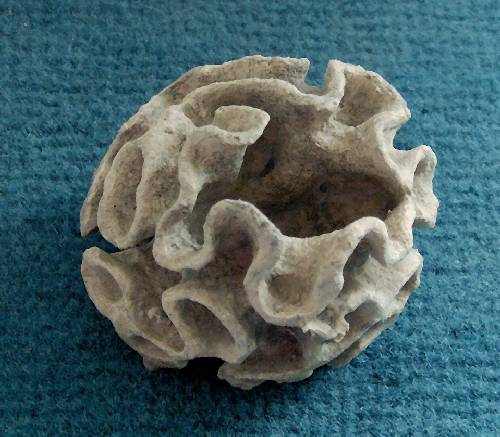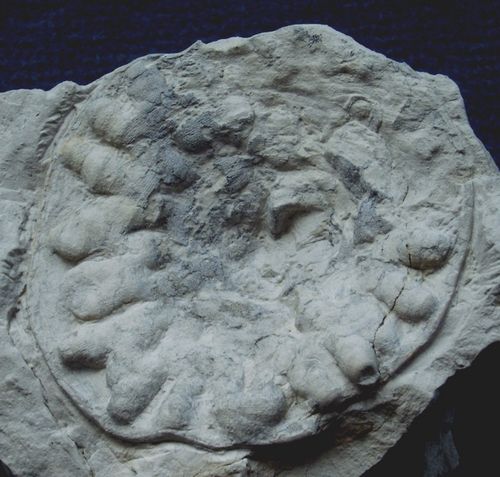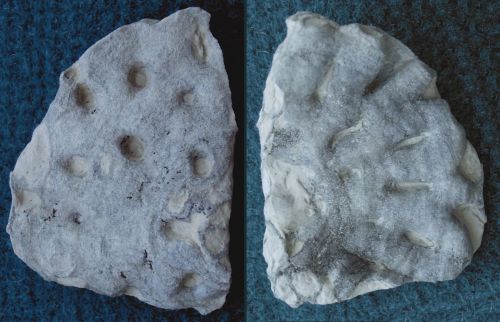Becksia soekelandi
Schlüter 1868
Becksia soekelandi is a rare species from the Lower Campanian of Höver.
A specimen of Becksia soekelandi collected in 2009 is shown here in top, bottom and side view. Since Becksia soekelandi is very thin walled and fragile, the sediment filling the paragaster, the tubes forming the wall and the cavaedial interspaces was not removed.
The specimen is unusual, showing a wall consisting of two shells of anastomosing tubes, whose ends form a broad funnel rim.
The second example of Becksia soekelandi has a more common habit, with a longitudinally folded wall. The folds are not yet completely closed to form tubes.
Notice several root processes near the bottom. The generally long roots are missing here.
Examples of Becksia soekelandi with completely smooth upper wall sections are known. In these cases only the bottoms of the sponges show some folding which fades further upward.


Becksia nidiformis
Leonhard 1897
Becksia nidiformis is a very rare species from Höver, and it is only known from the Lower Campanian.
Side-view and top-view of a specimen of Becksia nidiformis.
The species has a spherical habit and a central paragastral cavity.

Becksia feuerwehri
Schrammen 1912
Becksia feuerwehri is a very rare species at Misburg and Höver, and it is only known from the Lower Campanian.
The image shows a top-view of Becksia feuerwehri. The species forms flat dishes composed of a thin (2 mm) skeletal sheet which is deformed to yield radially protruding, finger-like, anastomosed tubes, resting on the dish.


The second example of Becksia feuerwehri, is a fragment (quarter disc). It shows the tube exits on the margin of the disc.
The following image pair shows the tubular protrusions on the upper side (right) of the dish, and corresponding holes on the botom side (left), which are the entrances to the tubes.

The skeleton of Becksia is composed of a highly regular grid of fused lychnisks. The folded skeletal sheet of the sponge body is only two to several meshes thick.